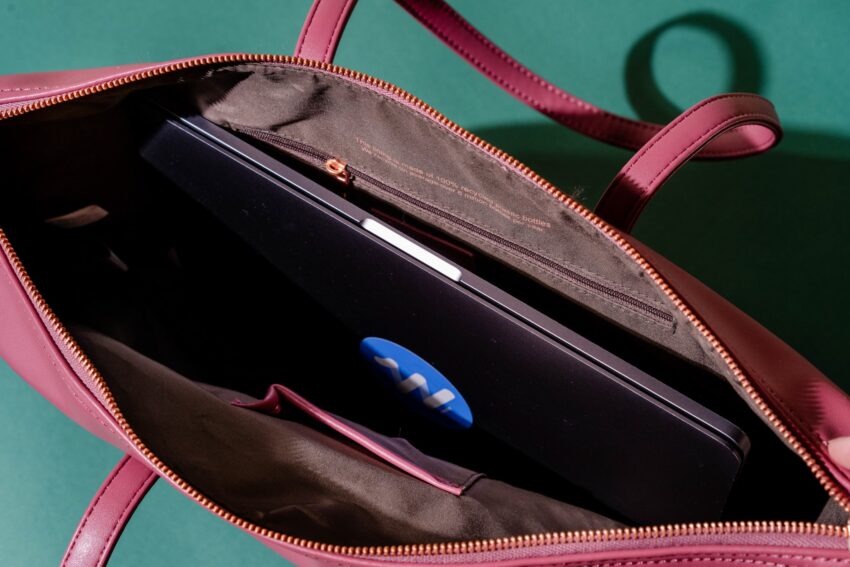
01 Mar Advice on taking a desktop over a plane
If you’re like most people, you use your computer every day at work and in your personal life. It’s probably one of the most valuable things you own and it can be difficult to travel with. But if you take some simple steps, you can make sure that your computer is safe and secure while traveling. The blog post is presented by https://beebuze.com
Find a sturdy bag or box for the computer’s parts

Image source: Google.com
It’s important to find a sturdy bag or box for the computer’s parts, especially if you’re traveling by plane. You don’t want your laptop getting crushed by other luggage, so make sure it has plenty of foam padding around it. Cardboard boxes are not strong enough to hold up in this situation–they might crack or break under pressure from heavier items being stacked on top of them in overhead compartments. If you have access to plastic bags with zip locks (or even better: Tupperware), those would work well too; just be careful not to put anything wet inside them! Take a look at the viper architecture.
Get enough batteries for your devices
If you’re traveling with a laptop and cell phone, it’s important to get enough batteries to last your trip. This will help ensure that you have access to power throughout the journey.
- Check the battery life of your devices before leaving home so that you can plan accordingly and buy replacements if needed.
- Some devices can be charged using a USB cable (such as smartphones or tablets), which means that if one dies before its time, simply plugging it into another device could give it enough juice for another day of use–and this is especially true if both are using similar types of batteries (e.g., Apple products).
Get an adapter that works in any country you visit
The travel adapter is a must-have for any international trip. You can buy one at the airport or online before you leave, but getting the right voltage and plug type for your destination country is important. If you’re not sure what kind of adapter you need, ask a salesperson in-store or on Amazon who specializes in electronics accessories such as Anker PowerPort 4 (which comes with four USB ports).
Once your adapter arrives, simply plug it into an outlet near where you’ll be working so that all of your devices are charging at once–this is especially helpful if there aren’t many outlets available!
Put your important documents on a flash drive or cloud storage account
If you’re traveling with a laptop, it’s easy to back up your files or transfer them to another device. If you have a desktop, however, backing up can be more complicated–if not impossible.
The best way to protect yourself is by putting your important documents on a flash drive or cloud storage account (like Google Drive). This way, if something happens during travel and your computer gets damaged or stolen, all of those important files won’t be lost forever!
Buy international plugs if necessary
When traveling abroad, you might find that your electronics don’t work as well at home. For example, if you’re going to Europe or Asia and want to use your laptop computer on the plane (which is always a good idea), make sure it has an adapter so that it can plug into the outlets there. You should also look into buying an international plug adapter if necessary–these come in handy if the voltage in the country of your destination differs from that of yours, or if there’s no outlet at all!
If possible, try not to use any adapters; instead bring along an extra battery pack for your phone/tablet/etc., since these don’t require any sort of conversion before being able to charge up again after being drained by all those photos taken during sightseeing trips around town!
Be sure to protect your computer while you travel
When you’re traveling with your computer, it’s important to keep it safe. Here are some tips:
- Protect the computer from damage caused by extreme temperatures. This can happen when you leave your laptop on an airplane or in a hot car, for example. If the temperature rises above 122 degrees Fahrenheit (50 C), then your hard drive will be destroyed within minutes and all of your data lost forever! To prevent this from happening, make sure that you always have an external hard drive so that if anything happens to yours while traveling–like getting stolen or overheating–you’ll still have access to all of your files via cloud storage services like Dropbox or Google Drive (or whatever else works best).
- Protect against moisture damage by keeping water away from electronics at all times while traveling! Moisture can seep into computers through their vents; this causes corrosion inside them which leads eventually leads to failure if not taken care of right away before too late.
Conclusion
With these tips, you’ll be ready to take your desktop computer on the road with confidence. Whether you’re traveling for business or pleasure, having access to your files and programs will make your trip easier and more enjoyable.

No Comments